
Lycaenidae is the second-largest family of butterflies, with over 6,000 species worldwide, whose members are also called gossamer-winged butterflies. They constitute about 30% of the known butterfly species.

Lycaena phlaeas, the small copper, American copper, or common copper, is a butterfly of the Lycaenids or gossamer-winged butterfly family. According to Guppy and Shepard (2001), its specific name phlaeas is said to be derived either from the Greek φλέγω (phlégo), "to burn up", or from the Latin floreo, "to flourish".

The large copper is a butterfly of the family Lycaenidae. L. dispar has been commonly arranged into three subspecies: L. dispar dispar, (single-brooded) which was commonly found in England, but is now extinct, L. d. batavus, (single-brooded) can be found in the Netherlands and has been reintroduced into the United Kingdom, and lastly, L. d. rutilus, (double-brooded) which is widespread across central and southern Europe. The latter has been declining in many European countries, due to habitat loss. Currently L. dispar is in severe decline in northwest Europe, but expanding in central and northern Europe.
Antipodolycaena is a subgenus of the genus Lycaena which is found only in New Zealand. Antipodolycaena includes four species that are endemic to New Zealand:

The scarce copper is a butterfly of the family Lycaenidae.
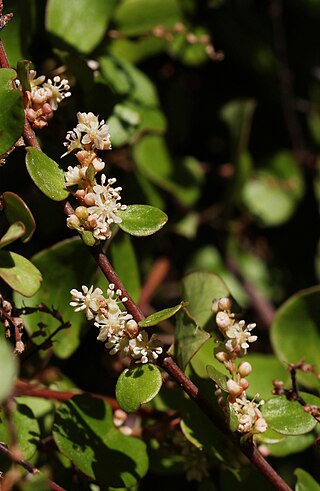
Muehlenbeckia complexa is a plant commonly known as pohuehue, although this name also applies to some other climbers such as Muehlenbeckia australis.
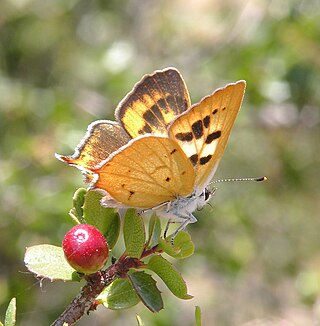
Lycaena hermes, the Hermes copper, is a species of butterfly in the family Lycaenidae. It is found in Mexico and southern California in the United States. It is known from a small number of areas. Forest fires in the San Diego area in 2003 and 2007 destroyed most of the populations.

Lycaena dorcas is a species of butterfly in the family Lycaenidae, the gossamer-winged butterflies. Its common names include dorcas copper and cinquefoil copper. The species was first described by William Kirby in 1837. It is native to North America. The species L. dospassosi was once included in L. dorcas.

Lycaena epixanthe, also known as the bog copper or cranberry-bog copper, is a North American species of butterfly in the family Lycaenidae. Adults like to sip drops of dew clinging to leaves and almost exclusively nectar on their host plant, cranberries. Because of this, bog coppers will spend their entire lives within the area of a single acid bog. Even though their flight is weak and close to the ground, bog coppers are hard to catch because of the habitat in which they live. Also, 85% of the bog coppers life span is spent in the egg. It is listed as a species of special concern in the US state of Connecticut.
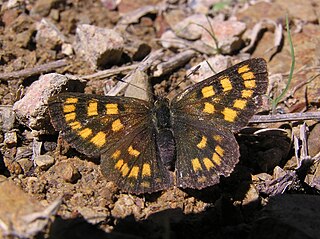
Lycaena feredayi, the glade copper, is a butterfly of the family Lycaenidae. It is endemic to New Zealand.

Lycaena hyllus, the bronze copper, is a butterfly of the lycaenids family found in North America.

Lycaena dione, the grey copper or great copper, is a butterfly of the family Lycaenidae. The species was first described by Samuel Hubbard Scudder in 1868. It is found from the southern Prairie provinces of Canada and western Ontario south to Texas and east to Illinois and Missouri. There is a disjunct population in southern British Columbia. A remnant population was found in the Willamette Valley, Oregon, as of the summer of 2004.
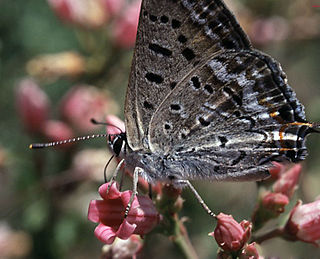
Lycaena arota, the tailed copper, is a butterfly of the family Lycaenidae. It is found in North America from New Mexico north and west to Oregon, south to southern California and Baja California, Mexico.
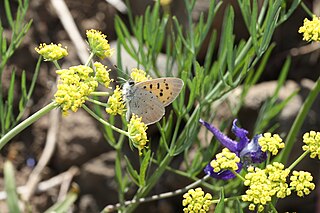
Lycaena rubidus, the ruddy copper, is a butterfly of the family Lycaenidae. It is found in the western mountains of North America. Adults lay their eggs on plants of the genus Rumex, which later become the larval food plants. This butterfly gets its name from the brightly colored wings of the males, which are important in sexual selection. Its larvae exhibit mutualism with red ants, and are often raised in ant nests until they reach adulthood. Adults are on wing from mid-July to early August.

Lycaena boldenarum, the boulder copper, is a species of butterfly which is endemic to New Zealand, it is found on both North Island and South Island in a wide variety of open habitats including grassland, shingle and sand dunes. They are normally only active in bright sunny conditions and their flight is usually low to the ground. The boldenarum part of the species name given by the Scottish entomologist Adam White in honour of his first wife, Helen and her sister Frances, whose maiden name was Bolden. It shares the Maori name pepe para riki with two congeners the common copper and the glade copper.
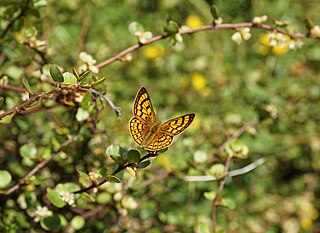
Lycaena rauparaha, Rauparaha's copper, Fereday’s copper or mokarakare is a species of butterfly endemic to New Zealand. It acquired its English common name because it occurred in the same coastal areas as the rangatira (chief) and war leader of Ngāti Toa Maori, Te Rauparaha.

















